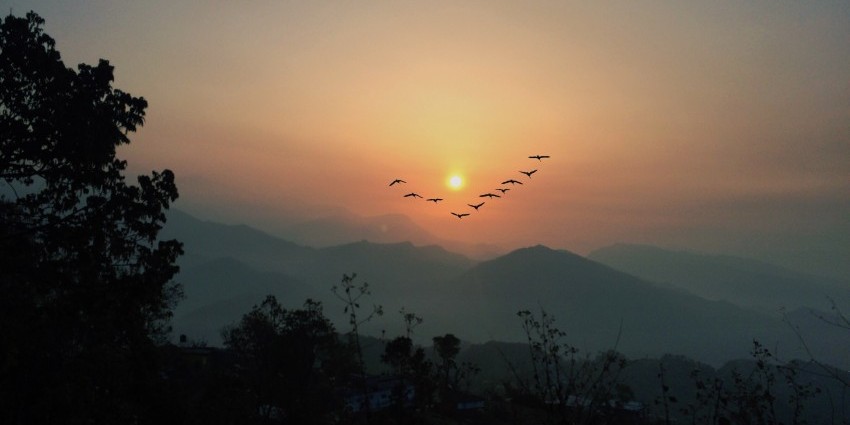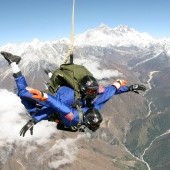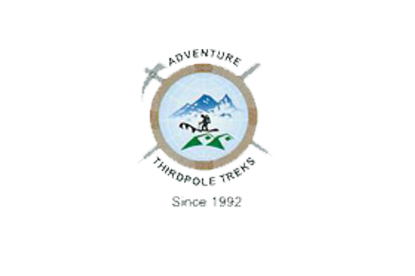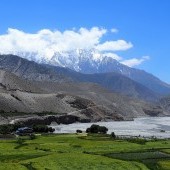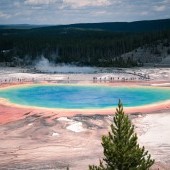Birding in Nepal
Key Takeaways:
- Nepal is a prime destination for birdwatching and nature travel.
- The country's diverse landscapes provide a habitat for a wide range of avian species.
- Nepal's rich avian diversity makes it a hotspot for birding.
- Birding enthusiasts can access guided tours in the country.
- Responsible and sustainable birdwatching practices are important in Nepal.
Nepal's Rich Avian Diversity
Nepal is one of the top destinations for birdwatching and birding enthusiasts, and for a good reason. Its position at the crossroads of the East Asian, Southeast Asian, and Palearctic regions has blessed the country with an incredible variety of habitats, from subtropical jungles to high-altitude deserts.
As a result, Nepal boasts a staggering number of avian species, with over 870 recorded so far. This includes a mix of resident birds, migratory species, and endemic birds that can only be found in Nepal.
The country's diverse landscape provides various habitats for birds, such as forests, wetlands, grasslands, and alpine meadows. Nepal also has several protected areas, including Chitwan National Park, Sagarmatha National Park, and Bardia National Park, which are home to many bird species.
Nepal's Avian Endemism
Nepal is home to more than 30 species of birds that are either endemic or near-endemic to the country. These include the Spiny Babbler, Nepal Wren-Babbler, and the White-bellied Heron.
The Spiny Babbler, also known as Kande Bhyakur in Nepali, is an elusive bird found only in the mid-hills of Nepal. Its unique appearance, with spiky feathers on its nape and shoulders, has given it both its name and a reputation as a mythical creature.
The Nepal Wren-Babbler, also called Pahari Wren-Babbler, is another bird that can only be found in Nepal. It is known for its loud, musical song, and its brown plumage blends perfectly with the dense undergrowth where it lives.
The White-bellied Heron, the world's second-largest heron, is a critically endangered bird found only in a few pockets of Nepal, Bhutan, and Northeast India. Its distinctive white belly and gray-blue feathers make it one of the most sought-after birds in Nepal.
Overall, Nepal's rich avian diversity has made it a must-visit destination for birdwatching enthusiasts. Its varied habitats, unique species, and breathtaking landscapes provide an unforgettable birding experience.
Best Birdwatching Locations in Nepal
If you're planning to go birdwatching in Nepal, you won't be disappointed with the diverse habitats and protected areas the country has to offer. Here are some of the best locations to explore:
- Chitwan National Park: This UNESCO World Heritage Site is home to over 500 species of birds, including the globally threatened Bengal florican, great hornbill, dusky eagle owl, and many more.
- Annapurna Conservation Area: With a diverse landscape ranging from tropical forest to alpine meadows, this area is a hotspot for birdwatching. Some of the birds you can spot here include the Himalayan monal, satyr tragopan, and yellow-billed blue magpie.
- Koshi Tappu Wildlife Reserve: This wetland is a paradise for bird enthusiasts, with over 485 species of birds recorded here. It's a great place to spot waterbirds such as the greater adjutant, Bengal florican, and swamp francolin.
- Bardia National Park: This lesser-known national park in western Nepal is a hidden gem for birdwatchers. With over 400 species of birds, including the slaty-breasted rail, Pallas's fish eagle, and greater spotted eagle, it's a must-visit destination for nature lovers.
These are just a few examples of the incredible birding locations available in Nepal. With such a diverse range of habitats and protected areas, there is something for every birdwatching enthusiast here.
Unique Avian Species in Nepal
Nepal is home to a diverse range of avian species, including some unique and endemic to the country. Birdwatching enthusiasts visiting Nepal have the chance to spot these extraordinary birds in their natural habitats and appreciate their beauty.
One of the most famous and sought-after species in Nepal is the Spiny Babbler (Turdoides nipalensis), a small bird with a distinct spiky appearance that is endemic to the country. It can be found in the Chitwan National Park and Shivapuri Nagarjun National Park, among other places.
The Himalayan Monal (Lophophorus impejanus) is another iconic bird of Nepal, known for its colorful feathers and striking appearance. It inhabits the high-altitude forests of the Himalayas and can be spotted in places such as Langtang National Park and Annapurna Conservation Area.
Other unique avian species in Nepal include the Nepal Fulvetta (Alcippe nipalensis), a small bird with a distinctive yellow-orange belly, and the Cheer Pheasant (Catreus wallichii), a beautiful bird with a long tail and vibrant plumage.
Experience Nepal's Unique Avian Species
By visiting Nepal's protected areas and conservation sites, birdwatching enthusiasts can witness these unique avian species in their natural habitats. Whether observing the Spiny Babbler in the dense forests of Chitwan National Park or catching sight of the majestic Himalayan Monal in the high-altitude regions of Langtang National Park, the experience of seeing these birds is truly unforgettable.
Exploring Nepal's unique avian species is a must for any birdwatching enthusiast and will leave visitors with a newfound appreciation for the beauty of nature.
Birding Seasons in Nepal
Nepal is a year-round destination for birding, but the best time to visit depends on the species you want to see. The country experiences three main seasons: winter, spring, and monsoon.
Winter
The winter months, from December to February, are the best for viewing migratory birds. Many species come to Nepal to escape the harsh winters in their native habitats. The lowlands of Terai and the wetlands of Koshi Tappu Wildlife Reserve are popular birding locations during this season.
Spring
Spring, from March to May, is the breeding season in Nepal, making it an excellent time for birding. The forests and hills are alive with the sounds of mating calls and territorial songs. Birdwatchers can spot colorful species such as the Himalayan Monal and the Satyr Tragopan in the mountains, while the Phulchoki Hill near Kathmandu is a great spot for migratory and resident birds.
Monsoon
The monsoon season, from June to August, is the least popular time for birding, as the heavy rains and low light conditions make it difficult to spot birds. However, the moist environment is ideal for spotting certain species such as laughing thrushes and babblers. The foothills of the Himalayas are the best place to go birdwatching during this season.
Overall, Nepal offers great opportunities for birding throughout the year. It is always advisable to plan your trip around the specific bird species that you want to see and the level of comfort you prefer while birding.
Essential Birding Equipment
When planning a birdwatching trip to Nepal, having the right equipment can make all the difference in your experience. Here are some essential items to consider packing for your adventure:
| Item | Description |
|---|---|
| Binoculars | A quality pair of binoculars is a must-have for birdwatching. Look for models with a magnification of at least 8x and a lens diameter of 40mm or more. |
| Field Guides | Carrying a bird identification guidebook or app will help you properly identify the species you spot. There are several guides available that are specific to Nepal's avian species. |
| Spotting Scope | If you are planning to observe birds from a distance, a spotting scope can be an excellent investment. It allows you to zoom in on faraway birds and get a closer view. |
| Camera | A camera with a telephoto lens can help you capture stunning shots of Nepal's unique birdlife. Remember to respect bird habitats and keep a safe distance while taking photographs. |
| Clothing and Footwear | Wear comfortable clothing and appropriate footwear for the terrain and climate. Dress in layers to accommodate changes in weather and carry rain gear if necessary. |
| Insect Repellent | Some birdwatching locations in Nepal may have mosquitoes and other insects. Bring insect repellent to keep them at bay. |
| Snacks and Water | Carry enough snacks and water to keep you energized and hydrated throughout your birdwatching excursion. |
With the right equipment and preparation, birdwatching in Nepal can be a truly memorable experience. Happy birding!
Guided Birding Tours in Nepal
For those who want to make the most of their birdwatching experience in Nepal, joining a guided birding tour is an excellent option. These tours offer a range of benefits to birding enthusiasts.
Guided tours provide access to expert bird guides who have extensive knowledge of the country's avian species. With their help, you can easily identify and spot various bird species that may be difficult to find on your own.
Furthermore, guided birding tours in Nepal offer organized itineraries that allow you to explore the best birding locations in the country. From popular national parks to remote conservation areas, these tours take you on a journey to discover the country's diverse habitats and avian species.
Joining a guided tour also provides the opportunity to explore different areas of the country while enjoying a hassle-free travel experience. You can focus entirely on your birding adventure without worrying about logistics, transportation, or safety concerns.
Several tour operators in Nepal specialize in birding tours and offer customized itineraries for individuals or groups. These tours may range from day trips to multi-day expeditions, depending on your interests and requirements.
Whether you are a novice birder or an experienced enthusiast, a guided birding tour in Nepal can be a great way to explore the country's avian diversity and rich natural landscapes.
Responsible Birdwatching in Nepal
While birdwatching can be a thrilling and enjoyable experience, it's important to remember that our presence can have an impact on the environment. Responsible birdwatching practices help ensure that we minimize that impact while still being able to enjoy the beauty of Nepal's avian diversity.
One of the most critical aspects of responsible birdwatching is practicing sustainable tourism. This means choosing tour operators, accommodations, and transport that prioritize environmental conservation and community engagement. By supporting sustainable tourism practices in Nepal, we can help protect the habitats and species that make birdwatching in Nepal such an incredible experience.
Another essential practice for responsible birdwatching is respecting the birds and their habitats. Remember to observe from a distance, avoid disturbing birds or their nests, and never remove or disturb bird eggs. By minimizing our impact, we can help ensure that birds and their habitats remain healthy and vibrant for generations to come.
It's also crucial to respect local communities while birdwatching in Nepal. Seeking permission before entering any private property and following local customs and traditions can help build positive relationships with the people who live in and around birdwatching sites. Supporting local communities through responsible tourism practices also helps ensure that they benefit from the economic opportunities of birdwatching and have a stake in conserving the environment.
To sum up, responsible birdwatching in Nepal means practicing sustainable tourism, respecting the birds and their habitats, and respecting local communities. By following these guidelines, we can help ensure that birdwatching in Nepal remains a sustainable activity for both visitors and the environment.
Birding Etiquette in Nepal
While birdwatching is a delightful experience, it is important to be mindful of the impact on the environment and the birds themselves. In Nepal, there are specific guidelines for responsible birdwatching that visitors should follow. By adhering to these simple rules, birders can reduce the impact of their presence on bird habitats and help conserve the natural beauty of the country.
1. Avoid disturbing the birds
Birds in Nepal can be easily disturbed by noise and movement. It is important to keep a reasonable distance and avoid direct contact, which can cause stress and interfere with breeding patterns. Minimize noise and sudden movements, and try to blend in with the surroundings to observe birds without causing a disturbance.
2. Respect bird habitats
Nepal's bird habitats are unique and fragile. It is crucial to avoid disturbing their habitats by not treading on sensitive areas or altering local vegetation. As much as possible, stick to designated trails and avoid reaching out to birds or their nests.
3. Do not remove or disturb bird nests or eggs
Birds in Nepal are protected by law, and their nests and eggs are an important part of their life cycle. It is illegal to remove or disturb bird nests or eggs. Always maintain a safe distance from nests and do not interfere with breeding birds.
4. Be conscious of the environment
Nepal has some of the world's most beautiful landscapes, and it is everyone's responsibility to keep it that way. When birding, avoid leaving trash behind and try to minimize your impact on the environment. Nepal's bird habitats deserve respect and protection.
5. Respect local communities
Nepal is home to many rural communities, and it is important to respect their culture and way of life. Always seek permission before entering private property and follow guidelines provided by local authorities. Be respectful of local customs, and do not disturb local residents or their livestock when birdwatching in rural areas.
By following these simple guidelines, birdwatchers can make a positive impact on Nepal's bird habitats. Let's work together to preserve the natural beauty and unique diversity of Nepal's birdlife.
Birding Resources in Nepal
If you're planning a birdwatching trip to Nepal, there are many resources available to help you make the most of your experience. From local birding clubs to online forums and research organizations, here are some of the top birding resources in Nepal:
- Nepal Bird Conservation Network (NBCN): This organization is dedicated to promoting bird conservation and research in Nepal. They offer educational programs, birdwatching tours, and other resources for bird enthusiasts.
- Birding in Nepal Facebook Group: This active Facebook group is a great way to connect with other birders in Nepal. Members share photos, sightings, tips, and other birding-related information.
- Birds of Nepal Field Guide: Written by Richard Grimmett, Carol Inskipp, and Tim Inskipp, this comprehensive field guide covers over 800 species of birds found in Nepal. It includes detailed descriptions, illustrations, and maps to help birders identify and locate different species.
- Kathmandu Bird Watching Society: This local birding club hosts birdwatching tours, lectures, and other events in and around the Kathmandu valley. They also provide information and resources for birders visiting Nepal.
- BirdingPal Nepal: This website connects birdwatchers with local guides in Nepal. Guides provide personalized birdwatching tours based on your interests and skill level.
Whether you're a seasoned birder or just starting out, these resources can help you plan and enjoy a memorable birdwatching trip to Nepal.
Conclusion
Birding in Nepal is a truly unique and rewarding experience for nature travel enthusiasts. With its incredible avian diversity and stunning natural landscapes, Nepal offers some of the best birdwatching opportunities in the world. Whether you're searching for rare endemic species or observing migratory birds, Nepal has something to offer for every birding enthusiast.
In this article, we've covered some of the best birdwatching locations in Nepal, highlighted the country's rich avian diversity, and provided essential information on birding seasons and equipment. We've also discussed the importance of responsible birdwatching practices and provided resources for further exploration.
By joining a guided birding tour in Nepal, you can take advantage of expert knowledge and explore remote areas. But whether you're exploring on your own or with a group, it's essential to follow proper birding etiquette and minimize disturbance to birds and their habitats.
Overall, birding in Nepal offers a unique opportunity to witness the wonders of nature and avian diversity. We invite you to explore this beautiful country and experience its incredible birdwatching opportunities for yourself.
FAQ
What is birding?
Birding, also known as birdwatching, is the activity of observing and identifying birds in their natural habitats. It is a popular hobby among nature enthusiasts and provides an opportunity to appreciate the beauty and diversity of avian species.
Why is Nepal a great destination for birdwatching?
Nepal is a fantastic destination for birdwatching due to its rich avian diversity and unique habitats. The country is home to over 900 species of birds, including several rare and endemic species. Its diverse landscapes, from the lowland jungles to the high Himalayas, provide a wide range of ecosystems for bird enthusiasts to explore.
Where are the best birdwatching locations in Nepal?
Nepal offers several top birdwatching locations, including popular national parks such as Chitwan National Park and Bardia National Park. Other noteworthy areas include Koshi Tappu Wildlife Reserve, Annapurna Conservation Area, and Sagarmatha National Park. These locations provide a variety of habitats and offer opportunities to spot numerous bird species.
What unique avian species can be found in Nepal?
Nepal is home to several unique avian species, including the Spiny Babbler, Himalayan Monal, Nepal Wren Babbler, and the critically endangered Bengal Florican. These birds are either endemic or near-endemic to Nepal, making them a special sight for birdwatchers visiting the country.
What are the best birding seasons in Nepal?
The best birding seasons in Nepal vary depending on the species you wish to observe. Winter (November to February) is ideal for migratory birds, while spring (March to May) is the breeding season for many resident birds. Autumn (September to November) and summer (June to August) are also good times for birdwatching, with different species being active during each season.
What equipment do I need for birdwatching in Nepal?
Essential equipment for birdwatching in Nepal includes a good pair of binoculars, a field guidebook for bird identification, and appropriate clothing and footwear for outdoor exploration. Additional equipment such as a spotting scope, camera, and tripod can enhance your birding experience but are not mandatory.
Are there guided birding tours available in Nepal?
Yes, there are guided birding tours available in Nepal. Joining a guided tour can provide several benefits, including access to expert bird guides who can help identify species, organized itineraries that cover the best birding spots, and the opportunity to explore remote areas that may be challenging to navigate independently.
How can I practice responsible birdwatching in Nepal?
Responsible birdwatching in Nepal involves minimizing disturbance to birds and their habitats. This includes observing birds from a distance using binoculars or a telephoto lens, respecting restricted areas and nesting sites, and refraining from playing bird calls or imitating bird sounds to attract them. It is also essential to follow local regulations and support conservation efforts.
What are some birding etiquette tips for Nepal?
When birdwatching in Nepal, it is important to minimize disturbance to the birds and their environment. Avoid making loud noises, stay on designated trails or paths, and refrain from removing or disturbing bird nests, eggs, or feathers. Always be respectful of the natural habitats and other birdwatchers or visitors in the area.
Are there additional birding resources available in Nepal?
Yes, there are various additional resources available in Nepal for birdwatching enthusiasts. Local birding clubs and organizations often offer information, events, and opportunities to connect with other birdwatchers. Online forums and websites dedicated to birding in Nepal can provide valuable insights and recommendations. Additionally, field guides specific to the region can assist with bird identification.
